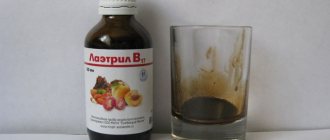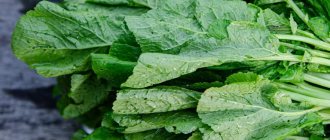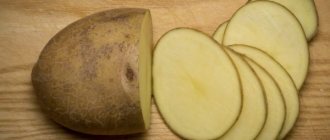What is vitamin E good for? Why is it important to include it in your diet?
Consuming foods that are high in vitamin E may provide the following health benefits:
- Protecting cells from damage. Free radicals destroy healthy body cells, contributing to aging, as well as the development of heart disease, autoimmune disease and cancer. Vitamin E is a powerful antioxidant that can slow down cell damage (you can learn all about how antioxidants work in our other article).
- Normalization of cholesterol levels. Cholesterol is naturally created by our liver and is essential for normal cell, nerve and hormone function. However, when LDL cholesterol becomes oxidized, it becomes dangerous, increasing the risk of fat deposits on blood vessels and clogged arteries. Vitamin E is able to reduce the activity of the enzyme that controls cholesterol synthesis (HMG-CoA reductase), prevents the oxidation of LDL cholesterol and cell adhesion, thereby protecting the arteries and slowing the progression of atherosclerosis.
- Restoring damaged skin. The benefits of vitamin E for skin are one of the reasons why it is called the “beauty vitamin.” By strengthening capillary walls, participating in collagen synthesis, improving skin elasticity and hydration, it acts as a natural rejuvenator for the entire body. As an antioxidant, it also reduces inflammation, speeds up healing processes, and reduces the damage caused to the body by exposure to cigarette smoke and UV radiation.
Vitamin E is often used on cuts to speed up their healing. It minimizes oxidation reactions in the wound and keeps it moist. Today, many cosmetics manufacturers produce vitamin E-based skin care products designed to nourish, moisturize and restore skin after damage, ulcers and burns.
Cosmetics with vitamin E
- Thickening of hair. Another popular beauty use of vitamin E is in hair masks. Vitamin E oil helps reduce environmental damage to hair, retains natural moisture in the scalp, saturates hair with beneficial microelements and makes it healthier and fresher. In addition, together with vitamin C, it is involved in collagen synthesis.
- Nervous system support. Vitamin E keeps the nervous system healthy by protecting the myelin sheaths that surround the nerves. It helps prevent mental degeneration in older people, including, as studies have shown, Alzheimer's disease. Thus, vitamin E improves short-term memory and, in combination with vitamin C, reduces the risk of developing dementia.
- Improving physical endurance. The use of vitamin E in the diet can increase energy and eliminate fatigue by improving blood circulation. It also strengthens capillary walls and reduces the level of oxidative processes in muscles, which increase during cardio and aerobic exercise.
- Hormone balance. Vitamin E can play a crucial role in relieving symptoms of hormonal imbalance such as PMS, weight gain, allergies, urinary tract infections, anxiety and fatigue. It is often taken to reduce heaviness and pain during periods, regulate the menstrual cycle, reduce hot flashes and other menopausal symptoms.
Vitamin E helps women during periods of hormonal imbalance
. In fact, the benefits of vitamin E for the body do not end with these 7 points and science is just beginning to explore it. At the moment, there is already evidence that this vitamin helps people with diabetes (strengthens the action of insulin and improves the metabolism of glucose in the blood) and vision problems. It may be prescribed to promote healing and reduce blood clotting before and after surgery, and to reduce the harmful effects of certain medications (such as radiation or dialysis, and medications that can cause hair loss or lung damage). Vitamin E has been shown to fight breast, prostate, liver and skin cancer in animal studies.
With all this, to date, experiments have not shown that vitamin E or any other antioxidant is able to increase life expectancy, eliminate wrinkles or gray hair. But while vitamin E may not make you live longer, it will make you feel much better as you get older.
How much vitamin E should you take per day?
It is believed that since vitamin E protects healthy fats (polyunsaturated fatty acids) from oxidation, the required daily dose of vitamin E depends on the amount of these fats in your diet. You should drink even more vitamin E when your diet contains any refined oils, fried foods or rancid oils, and also if your body lacks vitamin A (vitamin E protects it from oxidation in the same way as fats). Conversely, vitamin E should not be taken together with iron, copper, zinc, magnesium and vitamins B12, D and K, which are poorly compatible with it.
Read: The best vitamins for skin and their natural sources
Although the recommended daily intake for vitamin E is low, many people do not consume enough foods containing it. The table shows generally accepted recommendations for how much vitamin E you should take per day:
| Age | Men | Women |
| 0-6 months | 4 mg (6 IU) | 4 mg (6 IU) |
| 7-12 months | 5 mg (7.5 IU) | 5 mg (7.5 IU) |
| 1-3 years | 6 mg (9 IU) | 6 mg (9 IU) |
| 4-8 years | 7 mg (10.4 IU) | 7 mg (10.4 IU) |
| 9-13 years | 11 mg (16.4 IU) | 11 mg (16.4 IU) |
| 14+ years | 15 mg (22.4 IU) | 15 mg (22.4 IU) and 19 mg (28.4 IU) during lactation |
IU = International Units
At the same time, many scientists and nutritionists today insist on higher doses of vitamin E - from 100 IU per day. Moreover, daily consumption of up to 400 IU of vitamin E is not considered dangerous and can be used for preventive purposes. For therapeutic effects (only as prescribed by a doctor!), an amount of 800 to 1600 IU per day is suggested.
Vitamin E supplements should only be taken on the advice of a physician.
Before moving on to a review of products that contain vitamin E, it remains to be noted that vitamin E is fat soluble - that is, the human body can store and use it as needed. The term “vitamin E” itself describes eight different compounds, of which the most active is alpha-tocotrienol. Recent research has shown that tocotrienols have exceptional health benefits:
- Reduce lipid and cholesterol levels;
- Protects the brain, neurons, cells and immune system;
- Helps with cardiovascular diseases, metabolic syndrome, cancer and osteoporosis.
However, dietary sources of tocotrienols are not as widespread:
| Name | Vitamin E content per 100 g of product (mg) | Calorie content 100 g (Kcal) |
| Paprika | 3,95 | 282,00 |
| Chili powder | 3,10 | 282,00 |
| Palm oil popcorn | 2,54 | 535,00 |
| Oat bran, raw | 2,21 | 246,00 |
| Coconut oil | 2,17 | 892,00 |
| Dried yellow water lily seeds | 1,59 | 361,00 |
| Coconut flesh, raw | 1,46 | 354,00 |
| Vegetable margarine, 67-70% | 1,42 | 606,00 |
| Flaxseed oil, cold pressed | 0,87 | 884,00 |
| Black pepper | 0,85 | 251,00 |
| Vegetable margarine, 37% fat, with salt | 0,83 | 339,00 |
| Brown rice chips | 0,56 | 384,00 |
| White Corn Chips (Tortillas) | 0,49 | 472,00 |
| Whole wheat bread | 0,45 | 252,00 |
| Brown rice, uncooked | 0,44 | 367,00 |
| Whole grain pasta, dry | 0,40 | 352,00 |
Therefore, in the tables below we present the content of the more familiar form of vitamin E in food products - alpha-tocopherol.
Daily requirement of vitamin E
| Category | Age | Vitamin E (IU) |
| Infants | 0 — 0,5 | 3 |
| 0,5 — 1 | 4 | |
| Children | 1 — 3 | 6 |
| 4 — 6 | 7 | |
| 7 — 10 | 7 | |
| Men | 11 — 14 | 10 |
| 15 — 18 | 10 | |
| 19 — 24 | 10 | |
| 25 — 50 | 10 | |
| 51 and older | 10 | |
| Women | 11 — 14 | 8 |
| 15 — 18 | 8 | |
| 19 — 24 | 8 | |
| 25 — 50 | 8 | |
| 51 and older | 8 | |
| During pregnancy | 10 | |
| During lactation | 12 | |
Daily requirement = children under 1 year of age - 0.5 mg/kg (usually completely obtained with mother's milk), adults - 0.3 mg/kg.
A factor that increases the human body’s need for vitamin E is increased dietary intake of polyunsaturated fatty acids.
It is different for everyone, for example, for men it should be at least 7-8 mg, for children – 4-5 mg, for women 5-6 mg, but for expectant mothers – 10 mg, and for nursing women up to 15 mg.
The normal content of vitamin E in the body of an adult man is 7-8 mg per day, a woman – 5-6 mg, a child – 4-5 mg. For pregnant women, the daily dose should be 10 mg, for nursing mothers – 15 mg. If the family eats foods containing a lot of polyunsaturated fats (vegetable oils, dairy products, meat), then the daily dose should be increased.
It is better to divide the consumption of nutrients into several doses than to take large dosages at once or even take healthy foods once a day. This way they will be better absorbed by the body. It should be remembered that when using synthetic alpha-tocopherol, the dosage should be increased by 1.5 times, because the effectiveness of the artificially created analogue is much less.
What foods contain vitamin E. Where is it found most?
It's best to get vitamin E from natural foods rather than from low-quality supplements or processed foods. Synthetic vitamin E will not necessarily be beneficial for your health and disease prevention, and it also increases the risk of side effects (read about this at the end of the article). That is why below we will consider only natural vitamin products that contain vitamin E.
Animal sources of vitamin E are quite scarce: mainly egg yolk, milk fat and liver. The first answer to the question of which foods contain the most vitamin E is vegetable, seed and nut oils. Much of this vitamin is found in the protective coating of grains, so some of it is lost during cleaning and grinding. So when choosing oils, give preference to those that have been produced by cold pressing rather than thermal or chemical extraction.
Wheat germ oil contains the most vitamin E
Other foods that contain large quantities of vitamin E are almost all edible seaweed. Thus, 100 g of dried spirulina contains 5 mg of vitamin E with a calorie content of only 290 kcal.
You can also find a lot of vitamin E in foods such as cabbage, dried apricots, avocado and all kinds of greens. Canned olives contain 3.81 mg of this vitamin per 100 g of product with a calorie content of 145 Kcal, and olives - 1.65 mg with a calorie content of 115.00 Kcal.
But first things first. Our first table showing where vitamin E is found includes the most abundant nuts, seeds and spices.
Table 1. Which foods contain the most vitamin E:
| Name | Vitamin E content per 100 g of product (mg) | Calorie content 100 g (Kcal) |
| Almond | ||
| Raw | 25,63 | 579,00 |
| Fried with butter | 25,97 | 607,00 |
| Fried without oil | 23,90 | 598,00 |
| Hazelnut | ||
| Raw | 15,28 | 646,00 |
| Fried without oil | 15,03 | 628,00 |
| Pine nuts | ||
| Dried | 9,33 | 673,00 |
| Peanut | ||
| Raw | 8,33 | 567,00 |
| Fried with butter | 6,91 | 599,00 |
| Brazilian nut | ||
| Dried | 5,65 | 659,00 |
| Pistachios | ||
| Raw | 2,86 | 560,00 |
| Fried without oil | 2,17 | 572,00 |
| Seeds | ||
| Sunflowers fried in oil | 36,33 | 592,00 |
| Sunflower, dried | 35,17 | 584,00 |
| Sunflowers, fried without oil | 26,10 | 582,00 |
| Pumpkins, dried | 2,18 | 559,00 |
| Spices | ||
| Chili powder | 38,14 | 282,00 |
| Pepper, red or cayenne | 29,83 | 318,00 |
| Paprika | 29,10 | 282,00 |
| Curry powder | 25,24 | 325,00 |
| Oregano, dried | 18,26 | 265,00 |
| Basil, dried | 10,70 | 233,00 |
| Parsley, dried | 8,96 | 292,00 |
| Cloves, ground | 8,82 | 274,00 |
| Sage, ground | 7,48 | 315,00 |
| Thyme, dried | 7,48 | 276,00 |
Data source: US Open Database for Standard Reference.
9 healthiest nuts and a table of their properties
Products containing vitamin E
Sunflower seeds
Eating sunflower seeds can help your digestive system. Seeds are a great snack. Sunflower seeds can be sprinkled on yogurt, oatmeal or salad. A 100g serving of sunflower seeds contains 35.17 mg of vitamin E. A 100g serving contains:
- 8.6 g fiber;
- 20.78 g protein;
- 645 mg potassium;
- 325 mg magnesium;
- 5 mg zinc.
Almond
For every 100g serving of almonds, there is 25.63mg of vitamin E. People can snack on roasted almonds, add them to porridge and baked goods, or drink almond milk. Almonds also contain:
- 21.15 g protein;
- 12.5 g fiber;
- 733 mg potassium;
- 270 mg magnesium.
Peanut
Peanuts are a popular snack. A 100g serving of roasted peanuts contains 4.93 mg of vitamin E. A serving also contains:
24.35 g protein
8.4 g fiber
634 mg potassium
14.355 mg niacin
Oils
Some oils are very rich in vitamin E, although they contain fat and calories. A tablespoon of the following oils contains:
- Wheat germ oil: 20.32 mg vitamin E;
- Rice bran oil: 4.39 mg vitamin E;
- Grapeseed oil: 3.92 mg vitamin E;
- Safflower oil: 4.64 mg vitamin E.
Avocado
Avocado is a versatile fruit that is very low in sugar and high in nutrients. 100g of avocado contains 2.07mg of vitamin E. The same serving size contains 10mg of vitamin C, making it a healthy addition to many meals and snacks. Avocados contain more potassium than bananas.
Spinach
A 100g serving of raw spinach contains 2.03 mg of vitamin E. One serving also contains:
- 9377 international units (IU) of vitamin A;
- 28.1 mg vitamin C;
- 2.2 g fiber;
- 558 mg potassium.
Swiss chard
Swiss chard is a dark green leafy vegetable that contains 1.89 mg of vitamin E per 100 g serving. Like many leafy greens, Swiss chard contains a number of additional nutrients, including:
- 6116 IU vitamin A;
- 81 mg magnesium;
- 30 mg vitamin C;
- 1.80 mg iron;
- 379 mg potassium;
- 1.6 g fiber.
butternut squash
Butternut squash is a delicious vegetable that is often found in fall and winter dishes. 100 g of baked pumpkin contains 1.29 mg of vitamin E. The same serving size contains many other vitamins and nutrients, including:
- 11155 IU vitamin A;
- 15.1 mg vitamin C;
- 3.2 g fiber;
- 284 mg potassium.
Beet leaves
While many people are familiar with the taste of beets, not everyone knows that the “greens” or leaves can be eaten. People can use beet greens in salads or sauté them in oil. 100g of beet greens contains 1.81 mg of vitamin E. Beet greens contain many additional nutrients, including:
- 7654 IU vitamin A;
- 24.9 mg vitamin C;
- 909 mg potassium;
- 2.9 g fiber;
- 1.90 mg iron;
- 114 mg calcium.
Trout
A 100g serving of trout contains 2.15mg of vitamin E. Trout also contains many healthy omega-3 fatty acids, and the same size serving contains 21.11g of protein.
Which oil has more vitamin E?
To get enough vitamin E from your diet, you can get into the habit of snacking on the nuts and seeds listed above. Another option is to start seasoning your dishes with the above spices and vegetable oils from our following table.
Table 2. Which vegetable oil contains more vitamin E
| Oil | Vitamin E content per 100 g of product (mg) | Calorie content 100 g (Kcal) |
| Wheat germ | 149,40 | 884,00 |
| Hazelnut | 47,20 | 884,00 |
| Sunflower, liquid | 41,08 | 884,00 |
| Almond, liquid | 39,20 | 884,00 |
| Safflower | 34,10 | 884,00 |
| Rice bran | 32,30 | 884,00 |
| Grape seeds | 28,80 | 884,00 |
| Almond, butter (hard) | 24,21 | 614,00 |
| Sunflower, butter (solid) | 22,89 | 617,00 |
| Vegetable margarine, 60% | 21,12 | 533,00 |
| Babassu | 19,10 | 884,00 |
| Rapeseed (canola) | 17,46 | 884,00 |
| Palm | 15,94 | 884,00 |
| Peanut, liquid | 15,69 | 884,00 |
| Margarine, 80% | 15,43 | 713,00 |
| Oatmeal | 14,40 | 884,00 |
| Olive | 14,35 | 884,00 |
| Almond paste | 13,54 | 458,00 |
| Poppy seeds | 11,40 | 884,00 |
| Peanut, butter (hard) | 9,10 | 598,00 |
| Soy, liquid | 8,18 | 884,00 |
However, you can’t eat a lot of oil and spices in one sitting. In the tables below, the Forest Fairy shows other foods that contain large amounts of vitamin E: fruits, berries, vegetables, etc. See how easy it is to get enough alpha-tocopherol from your daily diet!
Fish and seafood
Below is a table of vitamin E content in seafood products.
| Name | Vitamin E 100 g (mg) |
| Cod liver | 8,8 |
| Clams fried in oil | 8,04 |
| Smoked eel | 7,46 |
| Seaweed | 5,6 |
| Raw shellfish | 4,25 |
| Beluga caviar | 4,0 |
| Tuna in oil | 3,7 |
| Sardines in oil | 3,7 |
| Pacific herring | 1,8 – 3,7 |
| Atlantic salmon | 3,02 |
| Chum salmon caviar | 3,0 |
| Canned crab | 2,48 |
| Boiled crayfish | 2,42 |
| Atlantic herring | 2,39 |
| Boiled shrimp | 2,27 |
| Squid carcass | 2,2 |
| River pike perch | 1,8 |
| Pollock caviar | 1,6 |
| Far Eastern flounder | 1,2 |
| Som | 0,92 |
| Cod | 0,92 |
| Salaka | 0,7 |
| Carp | 0,48 |
What fruits contain vitamin E: from apricots to avocados
Table 3. Which fruits contain vitamin E
| Name | Vitamin E content per 100 g of product (mg) | Calorie content 100 g (Kcal) |
Dried fruits | ||
| Dried apricots | 4,33 | 241,00 |
| Dried blueberries | 2,35 | 317,00 |
| Dried cranberries | 2,10 | 308,00 |
| Apples, dehydrated | 0,75 | 346,00 |
| Apples, drying | 0,53 | 243,00 |
| Prunes | 0,43 | 240,00 |
| Figs | 0,35 | 249,00 |
| Lychee | 0,31 | 277,00 |
Exotic fruits | ||
| Sapota | 2,11 | 124,00 |
| Avocado | 2,07 | 160,00 |
| Kiwi | 1,46 | 61,00 |
| Mango | 0,90 | 60,00 |
| Guava | 0,73 | 68,00 |
| Pomegranate | 0,60 | 83,00 |
| Papaya | 0,30 | 43,00 |
| Lime | 0,22 | 30,00 |
| Mandarin | 0,20 | 53,00 |
Berries | ||
| Cranberry | 1,32 | 46,00 |
| Blackberry | 1,17 | 43,00 |
| Black currant | 1,00 | 63,00 |
| Raspberries | 0,87 | 52,00 |
| Blueberry | 0,57 | 57,00 |
| Gooseberry | 0,37 | 44,00 |
| Strawberry | 0,29 | 32,00 |
Other fruits containing vitamin E | ||
| Apricots | 0,89 | 48,00 |
| Nectarines | 0,77 | 44,00 |
| Red apples | 0,24 | 59,00 |
| Plums | 0,26 | 46,00 |
Also read: What are the benefits of cherries?
Which vegetables contain vitamin E?
The most vitamin E is found in vegetables such as cabbage, tomatoes, peppers and pumpkin, as well as greens. Looking at the table below, you will notice that the alpha-tocopherol content per 100 g of product is not particularly high in them, but we can consume them daily and in fairly large portions. In addition, they will saturate our body with other useful microelements.
Table 4. Vitamin E content in vegetable products
| Name | Vitamin E content per 100 g of product (mg) | Calorie content 100 g (Kcal) |
Salad greens | ||
| Dandelion greens | 3,44 | 45,00 |
| Dandelion greens (boiled) | 2,44 | 33,00 |
| Turnip greens | 2,86 | 32,00 |
| Turnip greens (boiled) | 1,88 | 20,00 |
| Cilantro | 2,50 | 23,00 |
| Chicory greens | 2,26 | 23,00 |
| Spinach (boiled) | 2,08 | 23,00 |
| Spinach | 2,03 | 23,00 |
| Grape leaves | 2,00 | 93,00 |
| Chard | 1,89 | 19,00 |
| Chard (boiled) | 1,89 | 20,00 |
| Beet greens (boiled) | 1,81 | 27,00 |
| Beet greens | 1,50 | 22,00 |
| Parsley | 0,75 | 36,00 |
| Arugula | 0,43 | 25,00 |
| Lettuce | 0,22 | 15,00 |
Cabbage vegetables | ||
| Rapini (boiled) | 2,53 | 33,00 |
| Rapini | 1,62 | 22,00 |
| Radicchio | 2,26 | 23,00 |
| Kale | 2,26 | 32,00 |
| Collard greens (boiled) | 0,88 | 33,00 |
| Kale | 1,54 | 49,00 |
| Kale (boiled) | 0,85 | 28,00 |
| Broccoli (boiled) | 1,45 | 35,00 |
| Broccoli | 0,78 | 34,00 |
| Brussels sprouts | 0,88 | 43,00 |
| Brussels sprouts (boiled) | 0,43 | 36,00 |
| Kohlrabi (boiled) | 0,52 | 29,00 |
| Kohlrabi | 0,48 | 27,00 |
| Watercress | 0,70 | 32,00 |
| Watercress (boiled) | 0,50 | 23,00 |
Pepper | ||
| Jalapeño | 3,58 | 29,00 |
| Sweet, red | 1,58 | 31,00 |
| Chili, red | 0,69 | 40,00 |
| Serrano | 0,69 | 32,00 |
| Chili, green | 0,69 | 40,00 |
| Sweet, green | 0,37 | 20,00 |
Tomatoes and products made from them | ||
| Tomato paste | 4,30 | 82,00 |
| Tomato puree | 1,97 | 38,00 |
| Ketchup | 1,46 | 101,00 |
| Tomatoes (red) | 0,54 | 18,00 |
| Tomato juice | 0,32 | 17,00 |
Other vegetables containing vitamin E | ||
| Pumpkin butternut squash | 1,44 | 45,00 |
| Butternut squash (baked) | 1,29 | 40,00 |
| Asparagus (boiled) | 1,50 | 22,00 |
| Asparagus | 1,13 | 20,00 |
| Parsnip | 1,49 | 75,00 |
| Parsnips (boiled) | 1,00 | 71,00 |
| Pumpkin | 1,06 | 26,00 |
| Pumpkin (boiled) | 0,80 | 20,00 |
| Carrots (boiled) | 1,03 | 35,00 |
| Carrot | 0,66 | 41,00 |
| Leek | 0,92 | 61,00 |
| Leek (boiled) | 0,50 | 31,00 |
| Onions (fried) | 0,68 | 132,00 |
| Bulb onions | 0,55 | 32,00 |
| Onion, young green | 0,21 | 27,00 |
| Green beans (boiled) | 0,46 | 35,00 |
Vitamin E is found in even smaller quantities in eggplant, fennel, celery, ginger, potatoes and rutabaga.
Vitamin E intake rate
This vitamin is not synthesized in the human body, and the body must receive all the vitamin E necessary for life through food.
The daily intake of tocopherols is 20 mg. This amount of vitamin is contained in 2 tablespoons of sunflower oil or 50 g of nuts.
Vitamin E intake should be increased during heavy physical activity (8 mg per 1 thousand kcal of diet) and by nursing mothers.
Possible harm and side effects from taking vitamin E
It is almost impossible to harm yourself by consuming natural plant sources of vitamin E. You can only talk about side effects when taking pharmaceutical drugs and nutritional supplements. What are these side effects?
- Skin irritations;
- Nausea and headache;
- Bleeding;
- Fatigue and other symptoms.
It is noted that people taking blood thinners or other medications should never take vitamin E supplements without the approval of their healthcare provider. Researchers also discovered the following consequences of overdose and contraindications to taking vitamin E:
- Long-term use of vitamin E (more than 10 years) increases the risk of stroke.
- Daily doses of more than 400 IU of vitamin E increase the risk of death from all causes (possibly because it begins to act as a pro-oxidant).
- In patients with diabetes or cardiovascular disease, doses of 400 IU or more per day increase the risk of heart failure. Also, these doses should be avoided by people with high blood pressure.
- Vitamin E supplements may be harmful if taken early in pregnancy. One study found a link between pregnant women taking these supplements and congenital heart disease.
- Large doses of vitamin E are also dangerous for men because they increase the risk of developing prostate cancer.
It is always better to consume vitamins from food than from pharmaceutical preparations!
Clinical manifestations of vitamin E deficiency
Considering that this compound is found in abundance in foods of plant origin, people who practice vegetarianism rarely experience the development of vitamin E deficiency. Despite this, every person is not immune from the development of hypovitaminosis. The main signs of this condition include:
This manifestation occurs equally in both women and men. With a lack of vitamin E, libido may decrease and reproductive dysfunction may develop, which manifests itself as infertility.
Muscle weakness. Even minimal tocopherol deficiency leads to the development of rapid fatigue and decreased potential for physical activity.
Psycho-emotional disorders. This type of disorder includes unstable mood, apathy, increased irritability and nervousness, as well as the inability to concentrate on certain things.
Premature aging. Vitamin E deficiency also affects a person’s external condition. People experiencing a chronic deficiency of this element are faced with the early appearance of facial wrinkles and a decrease in the elasticity of the skin.











